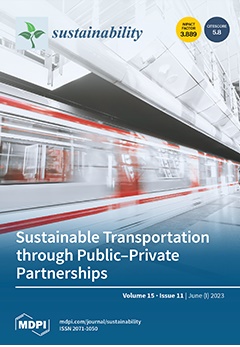Ver ítem
- xmlui.general.dspace_homeCentros Regionales y EEAsCentro Regional Patagonia SurEEA Santa CruzArtículos científicosxmlui.ArtifactBrowser.ItemViewer.trail
- Inicio
- Centros Regionales y EEAs
- Centro Regional Patagonia Sur
- EEA Santa Cruz
- Artículos científicos
- Ver ítem
Microclimatic conditions restrict the radial growth of Nothofagus antarctica regeneration based on the type of forest environment in Tierra del Fuego
Resumen
Regeneration is crucial for forest continuity in natural and managed stands. Analyzing intra-annual dynamics can improve the understanding between growth and climate, identifying regeneration survival thresholds. The objective of this study was to determine the microclimate constraints (rainfall, air, and soil temperatures) of Nothofagus antarctica regeneration growth in closed,
open, and edge forests in Southern Patagonia. We measured stand
[ver mas...]
Regeneration is crucial for forest continuity in natural and managed stands. Analyzing intra-annual dynamics can improve the understanding between growth and climate, identifying regeneration survival thresholds. The objective of this study was to determine the microclimate constraints (rainfall, air, and soil temperatures) of Nothofagus antarctica regeneration growth in closed,
open, and edge forests in Southern Patagonia. We measured stand characteristics (forest structure, understory plants, soil properties, animal use), microclimate, and the daily growth of regeneration using dendrometers (n = 6) during two growing seasons. We found significant differences in the studied variables (e.g., overstory, light, soil, understory plants, animal use) in the following order:
closed primary forests > open forests > edge forests with openlands. These changes defined the microclimate across the overstory gradient (e.g., soil moisture), influencing the daily growth of regeneration across the growing season (lag, exponential, stationary). Rainfall (the F factor varied from 6.93 to 21.03) influenced more than temperature (the F factor varied from 0.03 to 0.34). Daily
growth in closed forests indicated shrinkage (−0.0082 mm day−1 without rain and −0.0008 mm day−1 with 0.0–0.2 mm day−1 rainfall), while for more than 0.2 mm day−1 of rainfall, growth always increased. Open forests presented shrinkage during days without rain (−0.0051 mm day−1), showing positive growth according to rainfall. Edge forests always presented positive daily growth. The resilience of regeneration under these changed conditions was directly related to the overstory. The main outputs indicated that regeneration was vulnerable during non-rainy days at the middle or closed overstory (>40% crown cover), suggesting the need for long-term monitoring to develop better silvicultural proposals.
[Cerrar]

Autor
Martínez Pastur, Guillermo José;
Rodríguez‑Souilla, Julián;
Lencinas, María Vanessa;
Cellini, Juan Manuel;
Chaves, Jimena Elizabeth;
Aravena Acuña, Marie Claire;
Peri, Pablo Luis;
Roig Junent, Fidel Alejandro;
Fuente
Sustainability 15 (11) : 8687 (May 2023)
Fecha
2023-05-27
Editorial
MDPI
ISSN
2071-1050
Formato
pdf
Tipo de documento
artículo
Palabras Claves
Derechos de acceso
Abierto
 Excepto donde se diga explicitamente, este item se publica bajo la siguiente descripción: Creative Commons Attribution-NonCommercial-ShareAlike 2.5 Unported (CC BY-NC-SA 2.5)
Excepto donde se diga explicitamente, este item se publica bajo la siguiente descripción: Creative Commons Attribution-NonCommercial-ShareAlike 2.5 Unported (CC BY-NC-SA 2.5)


